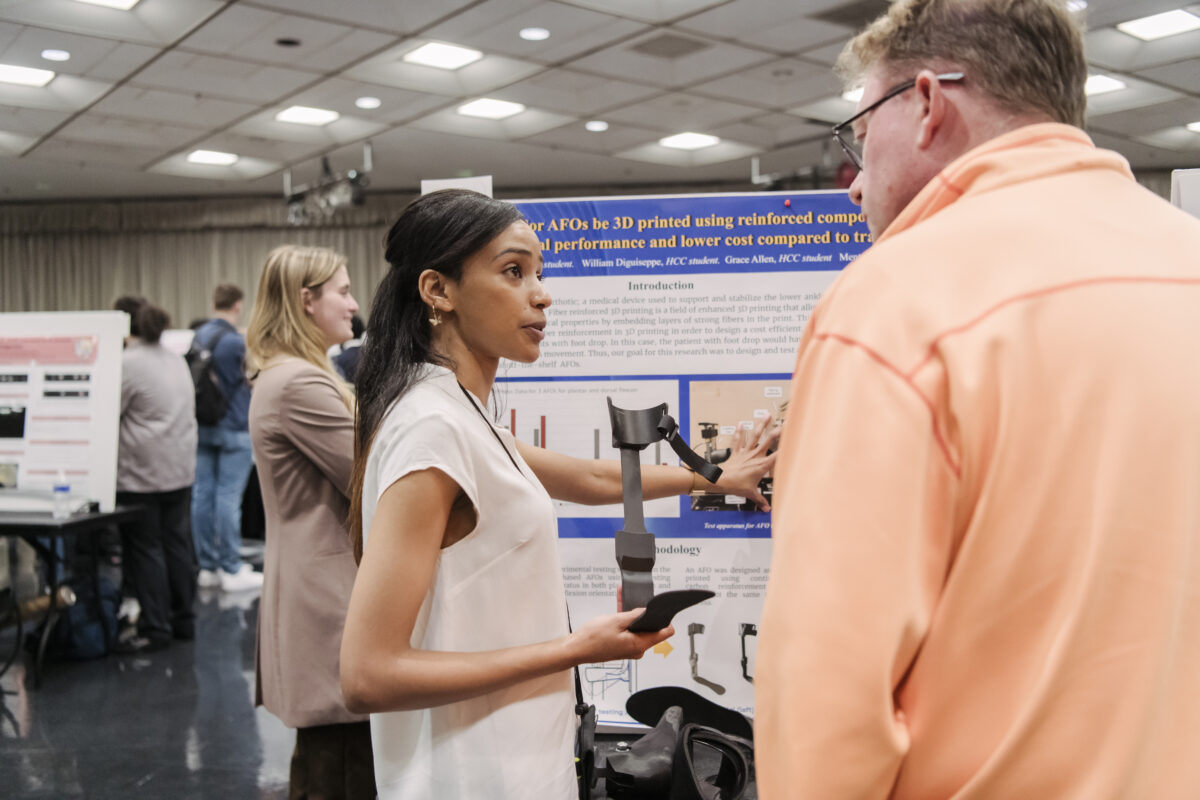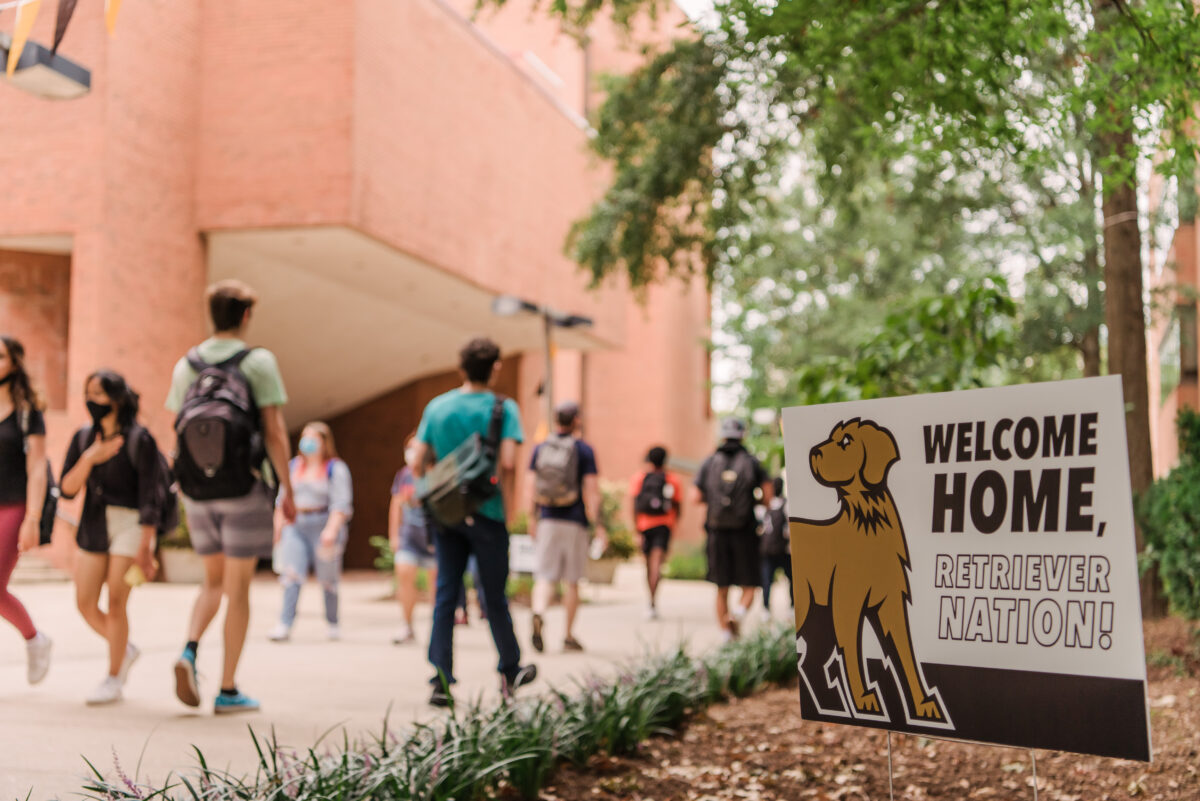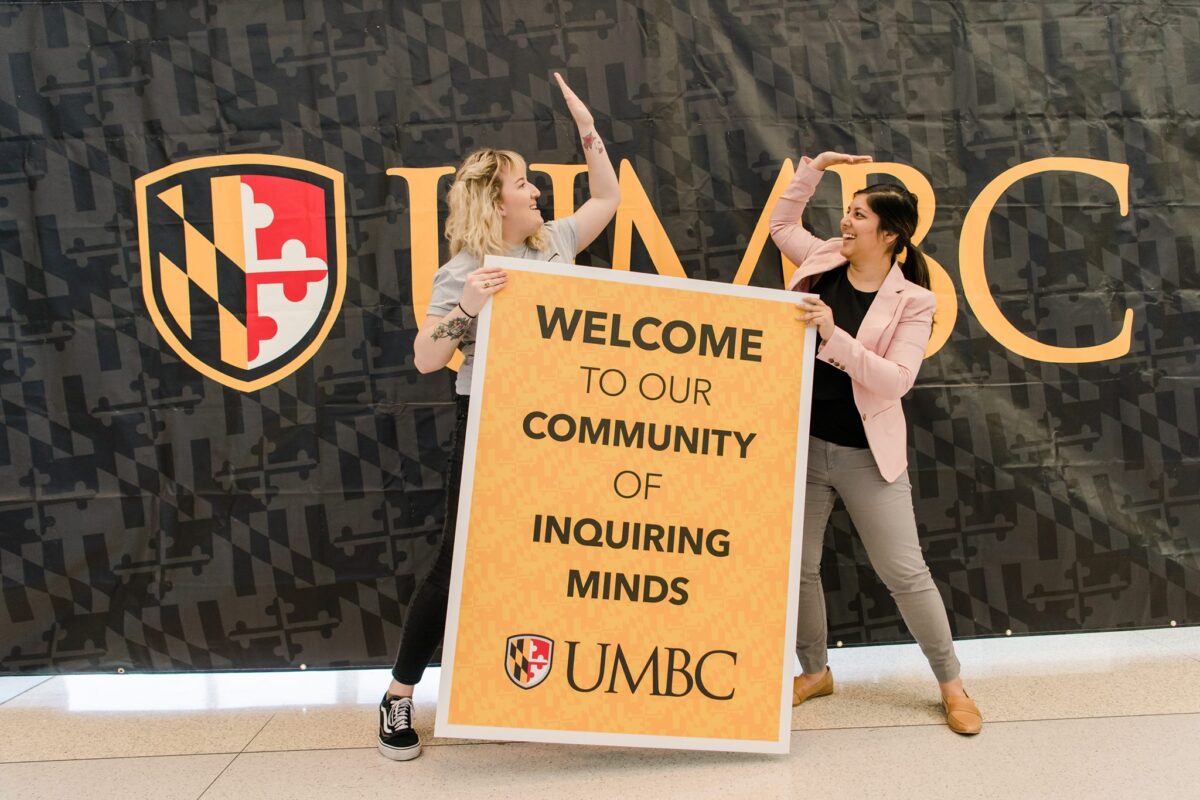Light for All
The science of light – photonics – is as ubiquitous as oxygen in today’s technology driven world. Go to the grocery store, make a phone call, listen to a CD or watch a movie on DVD and odds are photonics made it possible.
Anthony Johnson , director of UMBC’s Center for Advanced Studies in Photonics Research (CASPR) is not only focused on pushing the boundaries of research in his field, but is also determined to increase the number of underrepresented minorities in the sciences.
CASPR, which began with a 2002 NASA grant, is an interdisciplinary center, partnering with UMBC’s Departments of Physics; Computer Science and Electrical Engineering; Mathematics and Statistics; and Chemical and Biochemical Engineering. A current CASPR goal is to partner with photonics faculty in Mechanical Engineering, Chemistry and Biological Sciences.
Johnson, one of the most respected researchers in his field and a past president of the Optical Society of America, has longtime connections to UMBC that helped bring him to campus. Johnson got his start at the famous Bell Laboratories, where he was in the same Cooperative Research Fellowship Program as UMBC Graduate School Associate Dean Janet Rutledge.
Soon after CASPR’s funding was announced, Rutledge, along with Curtis Menyuk and Gary Carter—UMBC photonics experts and longtime colleagues of Johnson—encouraged him to consider leading the new center.
“I really liked what I saw at UMBC,” said Johnson. “There was a strong photonics effort, plus the opportunity to do things I enjoy most—working with students and mentoring while doing industrial collaboration in an academic setting.”
He also liked UMBC’s track record of increasing the number of minorities and women in the sciences. “I wanted to translate the model of the Meyerhoff Program’s success in biomedical sciences to the physical sciences and engineering,” said Johnson. “In addition to world-class research, I really would like to foster that kind of environment in the physical sciences and engineering and spearhead it through CASPR.”
Johnson knows firsthand the uphill battle minorities in the sciences face. “In 1981 when I received my Ph.D. in physics, there were roughly 1,000 physics doctorates granted in the country,” he said. “Of those, only four went to African-Americans and I was one of the four.”
According to Johnson, those paltry numbers have not changed much in the decades since. Out of about 1,000 physics Ph.D.’s awarded annually in the U.S., an average of just 10 to 15 go to African Americans, and only about 20 to Hispanic Americans.
The numbers don’t improve at the faculty level. “Out of the nearly 5000 full-time physics faculty at 186 U.S. Ph.D. producing institutions, there are only about 38 African American physics faculty in the nation right now. I just couldn’t believe it was that low.” [Source: 2000 Physics Academic Workforce – American Institute of Physics]
Under Johnson’s leadership, CASPR is already becoming a magnet for talented women and minority researchers. Elaine Lalanne, Ph.D., an assistant research scientist at CASPR, received her doctorate in 2003 from NJIT and was very likely the only African American female to receive a physics PhD in the country that year.
Johnson is a firm believer in taking his dedication on the road and into the community. Each year he logs thousands of miles traveling cross country and across the globe to locations like Italy and Ghana to connect with fellow researchers, educators and most importantly, to demonstrate science to young people.
He is the principal investigator of “Hands-On Optics: Making an Impact with Light,” a K-12 educational outreach partnership that includes the Optical Society of America and the National Science Foundation. This past summer, he hosted an optics and laser demonstration for middle school girls from ESTEEM, a UMBC Center for Women and Information Technology-affiliated program.
Johnson is on the road a lot in his personal life as well, as he still lives in New Jersey and drives home for the weekends to be with his wife, Adrienne Johnson, Ph.D. The Johnsons have three children, one of whom, Brandon, is a sophomore mechanical engineering major and Meyerhoff Scholar at UMBC.
A portion of the NASA funds were used to build a CASPR Ultrafast Optics & Optoelectronics Research & Teaching Facility for Johnson’s research group. His group is doing research on a variety of future-looking technologies, including the interesting optical properties of carbon nanotubes, high-speed optical switching for telecommunications, improving quality control for fiber optic manufacturers and research in optical limiting for proposed experimental eyewear for the U.S. Department of Defense.
But the project that Johnson and CASPR are most eagerly awaiting news about is UMBC’s participation in Mid-Infrared Technology for Health and the Environment (MIRTHE). The $17 million NSF Engineering Research Center proposal teams CASPR and UMBC with co-investigators at Princeton University (lead institution), The Johns Hopkins University, Rice University, Texas A&M University and the City University of New York.
“Of 110 pre-proposals submitted to NSF, our team has made it to the final nine proposals and is a strong competitor to make the final cut to four funded proposals,” Johnson said. “This would be a major engineering center at UMBC if we are selected. We are incredibly excited about the future of CASPR.”
(11/1/05)



